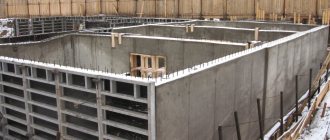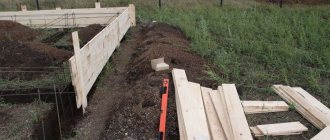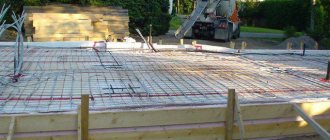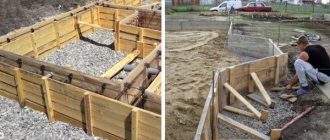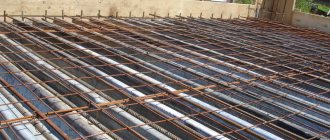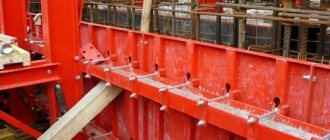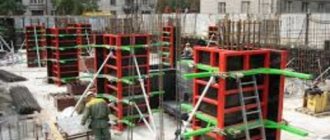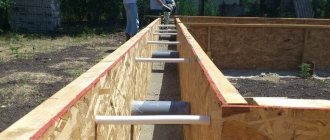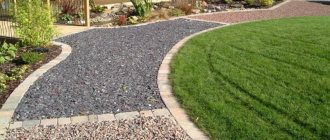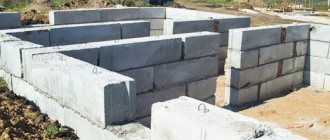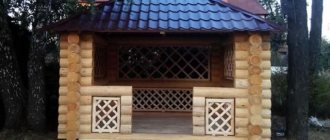For monolithic construction of large structures, the latest material has recently been used - plastic formwork. It is universal in the hands of experienced craftsmen and is a real construction set. For the manufacture of columns, walls, ceilings or foundations, removable, permanent or sliding plastic formwork is used.
Plastic reusable formwork
For reinforcement, fiberglass reinforcement can be used. The formwork tie is made of metal, but it can also be made of plastic. If you are planning single work, then a good solution would be to rent plastic formwork.
Areas of use
Plastic structures are used for the construction of structures of various shapes:
- Columns
Recreating oval or round objects is difficult, so a universal kit called Geoplast comes to the rescue. In the case where the architecture of the main building does not allow the installation of a metal frame, a plastic one is used. The diameter of one column can reach 6.5 m. 2. Rectangular pylons
Any configuration and size can be achieved using a base of joint modules. The equipment can be installed in record time – just 5 minutes.
- Foundations and garden paths
The Ironay plastic deck as a frame is notable for the fact that with the help of universal design forms it is possible to carry out serious architectural projects: bridges, arches, concrete pools, facade elements.
- Square cylinders
If you build square or rectangular pylons, use plastic formwork. Such products cost approximately 35,000 rubles. This price pays off with ideal geometric shapes. Also, with the help of equipment, builders erect 3-meter square columns.
- Walls
Used in administrative buildings and residential buildings. Several formwork parts form a frame, which can easily be poured with concrete for further finishing.
How to make removable formwork from metal
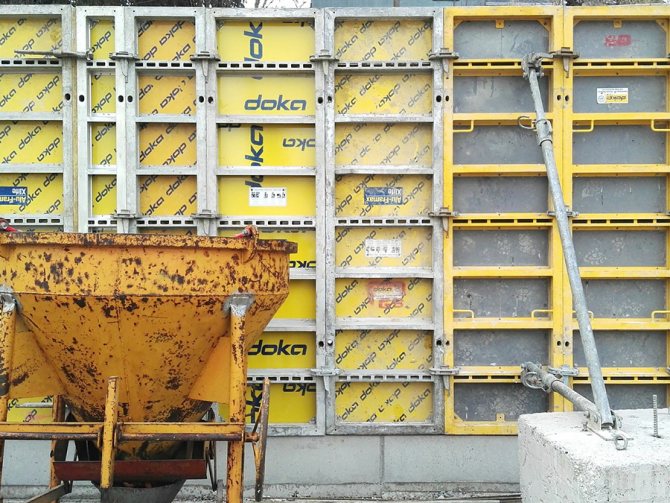
First you need to make a frame of suitable sizes from corners and pipes: weld rectangular structures and reinforce them with jumpers. The number of jumpers depends on the size of the frame: 1 in each meter frame and 2 in each two-meter frame. The minimum cross-section of profile pipes is 2x2 cm. To avoid gross mistakes, it is recommended to first carry out rough assembly and only after checking the correctness of the design make major welds.
You need to install steel sheets 1.5-2 mm wide on the finished frame. The sizes of the shields can be different: it is best to calculate them taking into account the design and dimensions of the future structure.
You can fasten the sheets in two ways: spot welding or metal screws. These options are equivalent, so you can choose the one that will be more convenient and affordable in your case. If you choose to weld, be sure to clean and prime each seam.
The next stage is assembly. The frame with sheets must be installed in pre-designated places. It is recommended to connect the shields together with nuts and studs. It is important to ensure that there are no gaps at the joints of the sheets, otherwise the solution may seep through them. In addition, it is recommended to strengthen the structure with stiffeners.
When the formwork is ready, the cavities between the sheets must be filled with concrete, and after the solution has set, the panels must be removed.
Advantages and disadvantages
The equipment is used in various fields of human activity. There are simply no disadvantages to this product after all its advantages are listed:
- Easy to assemble
The standard weight of individual structural elements is 10 kg. Therefore, if a person independently conceives the construction, he can easily do it. The latch turns the handle, and thus the product is mounted. Each part has its own number, so when looking at the instructions, the questions “what for” almost never arise.
- Optimal price
People widely use plastic in construction prices, since at an absolutely affordable price you can buy high-quality, durable material, which significantly reduces the cost of concrete mixtures for pouring.
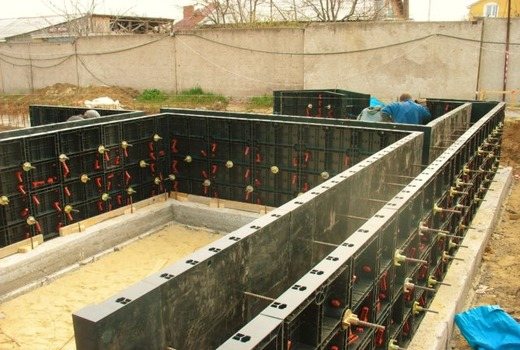
- Durability (service life – 220 production cycles);
- Ideal surfaces (the corners are smooth, so no additional adjustment is required).
- Easy to clean surfaces (ordinary running water helps get rid of concrete contaminants).
- Increased resistance to ultraviolet rays, temperature changes and changes in air humidity do not prevent builders from carrying out their work.
- 7. Plastic foundation formwork is used in places with a small area, the structure is easy to move.
- There are no contraindications for storing blocks.
Minor flaws include the fact that during severe frosts, builders need to heat the panels. The concrete is finally fixed 30 days after pouring into the module, so if the plastic is damaged at the slightest, the mixture sags, cracks and collapses. If we compare plastic products with metal ones, then, of course, metal is a stronger material. However, if handled carefully, plastic has many benefits. Firstly - price, secondly - resistance to corrosion, thirdly - lightness of construction.
Types of plastic formwork
Today, large monolithic structures are erected using plastic formwork. This detail helps builders save time on construction. Thanks to its light weight, simple installation and high turnover, skilled craftsmen widely use it in their work. The formwork includes:
- fasteners;
- beams;
- shield.
Before purchasing a product, you need to know what size you need. In general, there are 7 dimensional types of formwork.
The product also has increased strength and wear resistance, since fiberglass tightly protects the plastic in prefabricated modular equipment. All parts are well secured to each other using nuts, plugs, stops, and stabilizers. The edges of the product are covered with metal ties.
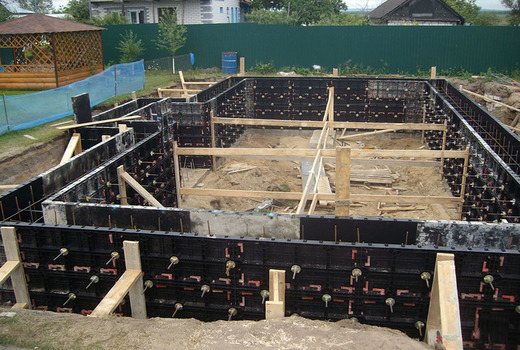
Depending on the purpose of plastic formwork in construction, there are several different types of this equipment. The main design differences and their characteristics are presented in the table:
| Type depending on method of application | Main characteristics |
| 1. Rectangular columns | There are 16 parts in the shield. The average possible thickness of the structure is 30 - 40 cm, height - 6.5 m |
| 2. Small shields | Used in the construction of foundations and walls of residential buildings. |
| 3. Round columns | There are no restrictions on the diameter of architectural structures, but the standard size is 6 m. It is used where metal structures cannot be used. |
| 4. Floors | Telescopic racks for formwork are used to create crossbars, reinforced concrete structures and floors. |
| 5. Flexible radius model | Using this design, swimming pools, road surfaces, and landscape design are created. |
The listed models of plastic formwork are combined with other building materials: plywood, iron, etc.
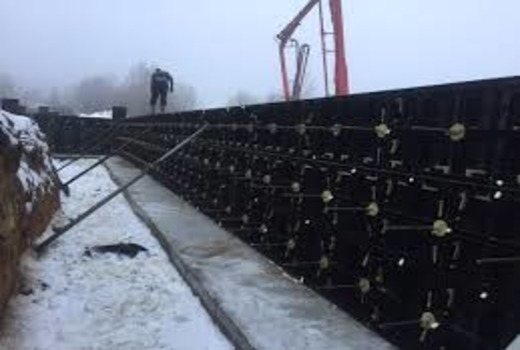
The second classification of formwork types concerns the ability to install and dismantle:
- Removable (in this case, plastic blocks are used 550 times, that is, 220 production cycles; the product is easily separated from the concrete and quickly washed off under running water).
- Non-removable (a disposable structure, since after the concrete hardens, the blocks forever remain part of the building; polystyrene foam is a safe substance for the human body, in addition, it protects concrete walls from the penetration of excess moisture; such monolithic structures can withstand heavy loads).
Types of material
The plastic structure can be removable or non-removable. The first option involves removing the mold after the monolithic foundation has hardened. Ease of dismantling and the possibility of repeated use provide plastic with a wide range of uses.
The permanent structure is installed with the expectation that it will later become part of the structure. Although reusing the material is not implied in this case, this option has its advantages. Remaining outside the concrete wall or foundation, such formwork becomes a protective layer that protects against aggressive environmental influences. The porous structure of the material can withstand large mechanical loads without the risk of damage, and the polystyrene foam from which the fasteners are made is safe for human health.
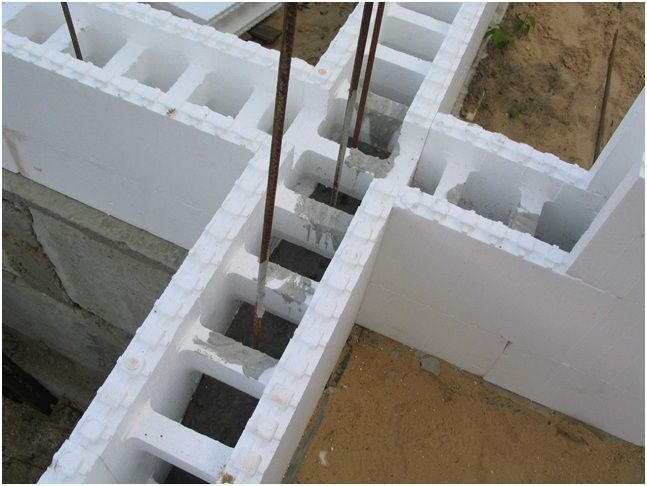
Permanent plastic formwork
Permanent type formwork in installation resembles cubes, which are additionally fixed using reinforcement. Finally, the assembled form is poured with concrete and left until the material is completely dry. Walls and other building elements are erected without the procedure of removing formwork.
Specifications
Among the technical characteristics of formwork, there are many descriptions that can be considered among the advantages of this type of construction equipment:
- plastic does not swell in either hot or cold weather. Corrosion, rotting, and warping are not harmful to the material;
- fairly high productivity (100 sq. m can be assembled in half an hour with 2 - 3 workers);
- a tower crane is not required during installation;
- high quality; low cost;
- good turnover (can be used about 550 times);
- plastic shields are convenient and easy to transport (the beam weighs approximately 7.5 kg, and the largest part weighs 21 kg);
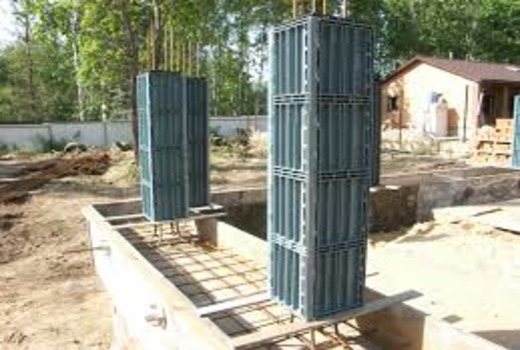
- can be used universally (that is, both vertically and horizontally);
- reliability (the design is very durable);
About 55% of pouring is saved when using durable plastic construction.
Installation work
Before you start installing the formwork, take care of cleaning the area where the blocks will be installed. That is, after the final leveling of the surface, accumulated debris, tree roots are removed, and moisture is also removed. Then the plastic shields are cleaned of dirt.
To properly install the structure, you must act according to the principle of the designer - sequentially install each part in accordance with the recommendations of the instructions. Next, the equipment is fixed to the base.
If the formwork is not secured correctly, the plastic may bend, which will affect the appearance of the wall. You also need to fasten the parts together well. And in order to safely separate the structure from the concrete, it is recommended to lubricate the plastic shields with oil.
After completing all the previous steps, the process of pouring concrete into the middle of the formwork begins. It is important to take into account the fact that in no case should you pour the solution higher than 1 meter. Depending on the thickness of the layer, the pressure on the model will increase, and, accordingly, the drying speed will decrease.
All the work from the beginning - installing the structure to the end - pouring it with concrete can easily be done by 1 builder. After the solution has completely dried, the plastic formwork can be removed. Drying time from 1 to 7 days. After the model is no longer needed, it is cleared of any remaining concrete and folded again until next time.
You can clean the formwork from the mixture with ordinary running water.
Reviews
Igor, 45 years old, Ilovaisk : I work as an installer on high-rise buildings. I often install plastic formwork. It’s better not to mess with wooden ones - their prices are jacked up, but the quality of the material is not suitable. The same applies to plywood and polystyrene foam structures, which after one use lose their original properties.
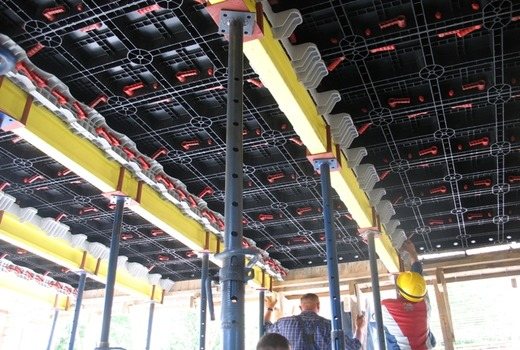
Maxim, 30 years old, Tyumen: Plastic formwork is not a cheap pleasure. However, this material is simply not replaceable in construction - the turnover rate is high (if the construction work is large-scale), the structure is light in weight. People who want to save money often buy used formwork. You shouldn’t neglect it; you can safely buy it, since plastic equipment is reusable.
Anton, 44 years old, Krasnoarmeysk: Due to the fact that the equipment is a constructor, you need to carefully approach the assembly process. Each plastic formwork is accompanied by instructions from the manufacturer, which must be studied before construction and during assembly of parts. In a day I build about a meter of structure. The main advantage of the design is that the plastic formwork is easily washed off after separating the blocks from the dried concrete.
Ivan, 50 years old, Chelyabinsk: Plastic formwork is produced in Russia. The quality of the construction is in no way inferior to that of European importers.
How to choose
The choice of formwork is based on the characteristics of the building, the construction of which requires this frame. For example, for a foundation pit, it is better to assemble the formwork from panels, since such work often requires a permanent structure. To learn how to make wooden formwork with your own hands, watch this video:
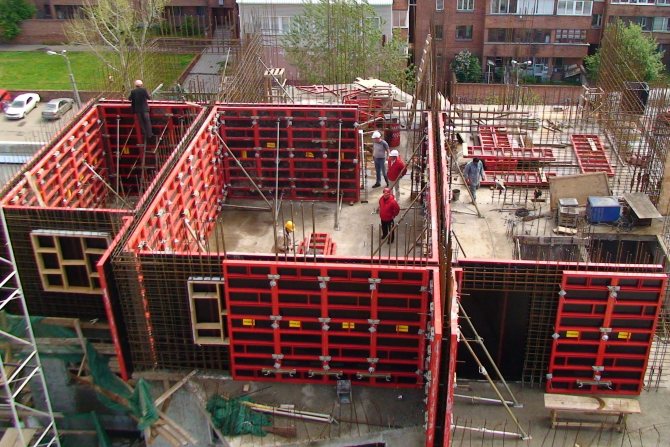
Among the existing types of formwork for foundations, plastic and panel structures are especially popular. Formwork from boards is constructed when arranging a shallow, strip and monolithic base. It requires high-quality waterproofing and proper assembly, during which the presence of gaps and cracks between the boards is taken into account.
When making his choice, each builder takes into account the features of the structure itself, the depth of the base or the height of the walls, their width, the need to arrange supports and lintels to strengthen the manufactured frame. You should remember the properties of the solution poured inside and take care to reliably strengthen the constructed frame.
